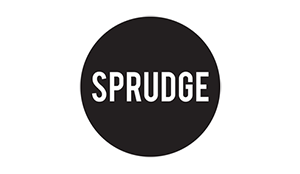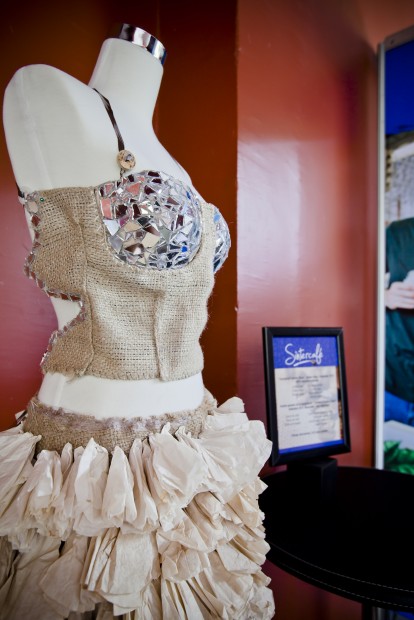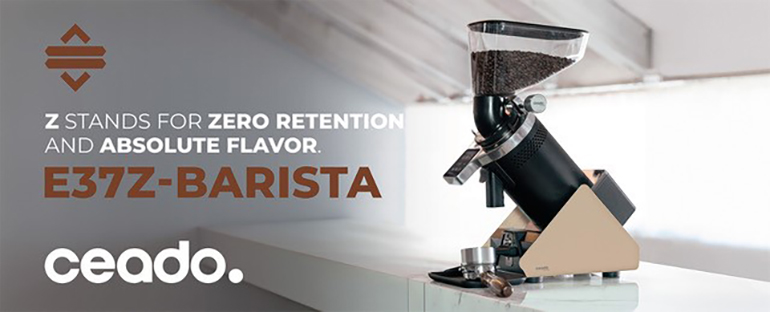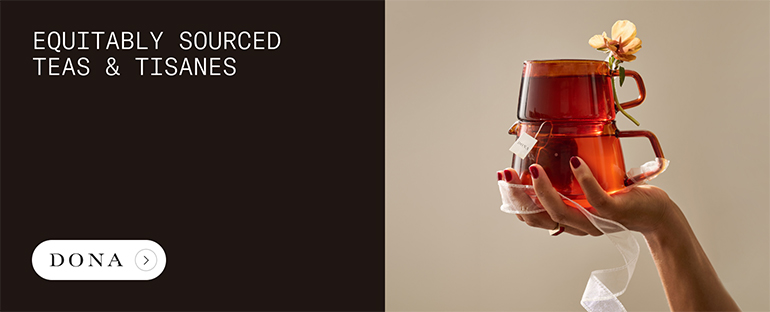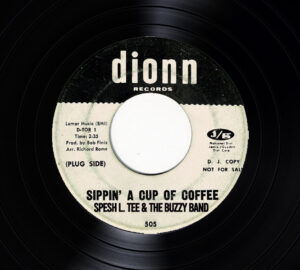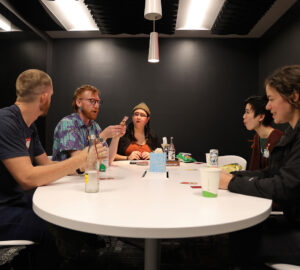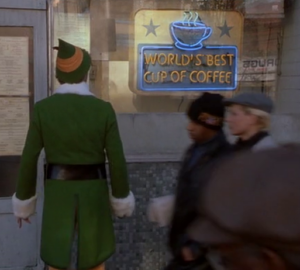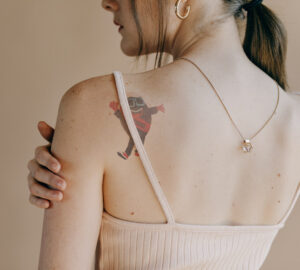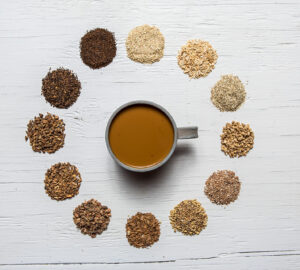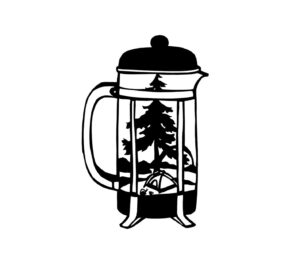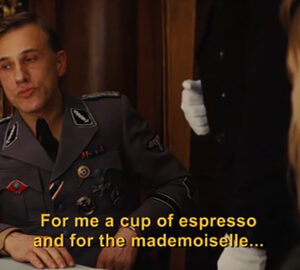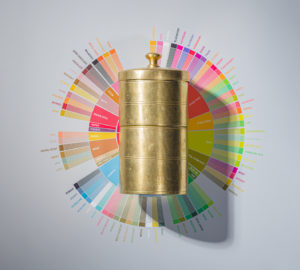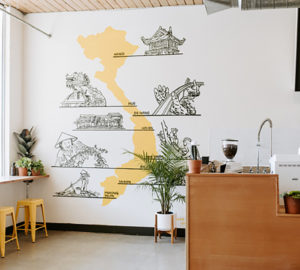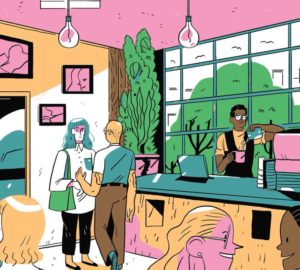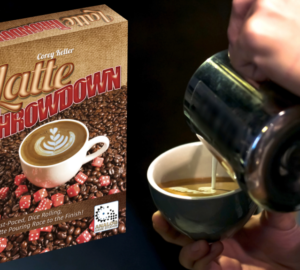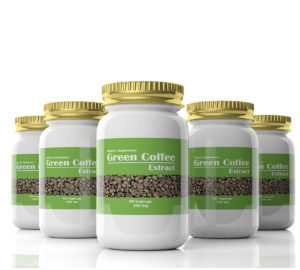The gleaming tile floors and stout white columns gave a fittingly grand backdrop. Here at the Marriott Los Sueños, on the Playa Herradura in Costa Rica, finalists are being announced at the 27th annual Grano de Oro Art Contest. A dress constructed partially of coffee bags takes center stage, winner of that weekend’s “Ecological Fashion Show”. Welcome to Sintercafé, an annual convention put on since 1987 by a non-profit organization to promote coffee grown in Costa Rica.
“Grano de Oro” means literally means “grain of gold” or the golden bean. This distinctly Costa Rican reference to finding wealth through growing coffee harkens back to the fact that many in the country made their fortune in agriculture not mining. The disappointed conquistadores found few mineral deposits here, and those who stayed used the land as cattle ranches, to grow cacao and eventually the red and yellow coffee cherries that form the color palette across a broad swath of mixed media, including painters and photographers. Each year, artists submit pieces showcasing the “golden bean” in all its various aspects to the competition, and a jury of art experts selects the winners.

The large format winner was Ana Rita Rosales Ovares, whose work “Por un buen café” (“For a good coffee”) shows her vision of two types of cherries in monotype and acrylic.
A photograph “Almácigo en areña” (“Seedling in sand”) by Gabriela Coto captured germinating beans, and enough of the jurors’ votes to take top prize in the photography category.

The artists who took top spots in the small and large format categories worked with a variety of media. Some painted with acrylics, others used watercolors, or a mix of materials to express visions of cherries collected at harvest or of men and women drinking coffee. Their vibrant impressions presented the beauty of the golden bean, and made an attractive backdrop for the real reason most people attend Sintercafé.
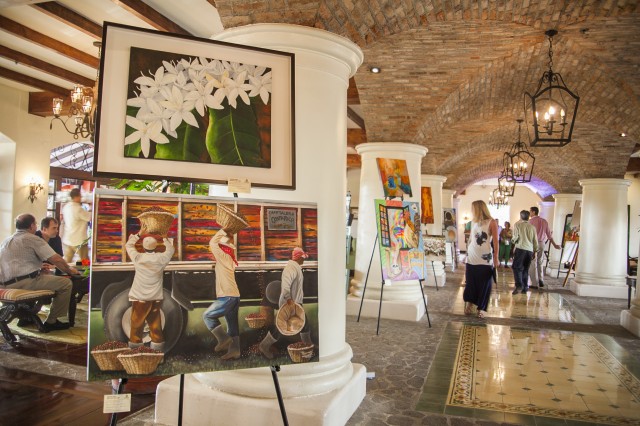
That reason is the coffee business, of course. At Sintercafé, experts gave reports about the state of the industry, while buyers and sellers haggled over the terms for purchasing and insuring large volumes of green coffee, and I watched as individuals, little crews, and great packs of coffee buyers / growers / sellers / importers / what-have-yous moved in shifts across the hotel lobby, each time passing the displayed Grano de Oro art.
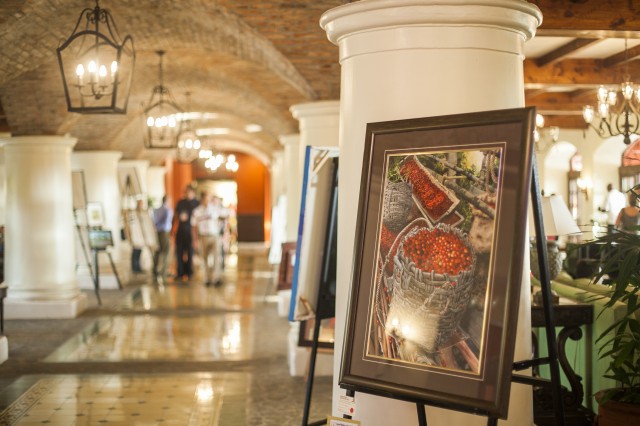
Nearly 500 people attend this annual exposition for Costa Rican coffee. The majority are from Central or North American nations. More than half of the attendees are people involved in getting the raw material, from those who grow it to those who drink it: exporters, importers, roasters, and retailers. And, because big brands like Dunkin’ Donuts, Green Mountain Coffee Roasters, Peet’s, Starbucks, and Tim Hortons all sign multimillion dollar deals at Sintercafé, bankers and insurers also send agents to this show.
The presentations that make up the main event aim to educate and inform the Costa Rican producers, cooperative managers, and exporters. As with most other producer focused gatherings this year, one topic dominated much of the discussions at Sintercafé: Roya, or Coffee Leaf Rust.

The conference organizers arranged a pre-conference workshop for attendees to visit a rust-affected farm. Three of the eight talks on the opening day focused on roya, starting with Xinia Chaves, the vice-minister of agriculture and livestock for Costa Rica, whose speech was called “Resilience: not giving up, not getting out.”
After setting that tone of determination, however, the mood darkened a bit.
In a panel discussion on coffee leaf rust and Central America, Ronald Peters, the executive director of the Instituto del Café de Costa Rica, repeated concerns about the fact that roya is showing up in coffee grown at ever-higher elevations. He and his fellow panelists agreed that if a recovery is to take hold in 2014, it will require governments and aid organizations to work in concert with farmers and cooperatives.
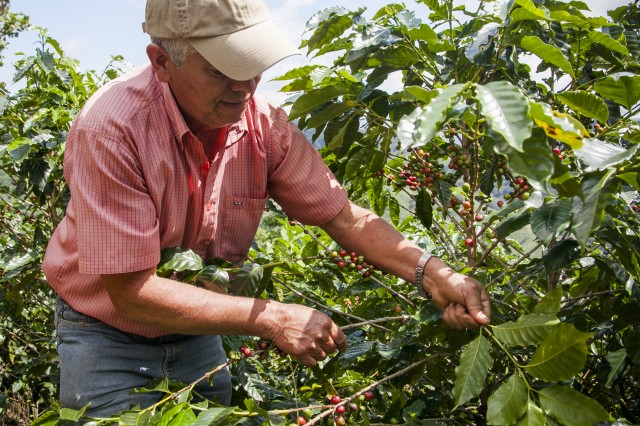
Outside the formal presentations, many worried that funding will not arrive in time to help distressed small holders.
Another issue tested the resolve of the farmer representatives at Sintercafé: the plummeting price of coffee on the commodity exchange in New York. During the conference, which took place in mid-November, the International Coffee Organization indicator price (the C) dipped below $1 per pound for the second time in a month.
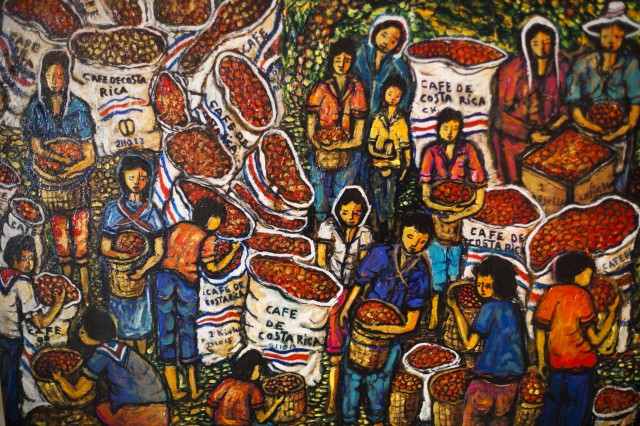
In response, traders are talking longer term contracts with risk-sharing clauses, giving hope that resilience will come—if not next year, then perhaps by 2015 or 2016. In the meantime, you can find resilience of the more spiritual kind in the art displayed all around us here, in the individual works of this year’s Grano de Oro competition. It’s complex, it’s complicated, it’s troubling and exciting and bigger than you can imagine. This is the coffee chain, and the people in it, laid out one canvas and handshake at a time.
Jenny Neill (@jennyneill) is a regular contributor to STiR Tea & Coffee Industry International, and blogs about beverage and travel at jennyneill.com. This is her first feature for Sprudge.
Top photo: Dress by Lia Leiva Lachner. Photo courtesy of Matias Suater and Daniela Linares
